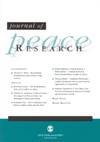Two studies question whether economic interdependence promotes peace, arguing that previous research has not adequately considered the endogeneity of trade. Using simultaneous equations to capture the reciprocal effects, they report that trade does not reduce conflict, though conflict reduces trade. These results are puzzling on logical grounds. Trade should make conflict less likely, ceteris paribus, if interstate violence adversely affects commerce; otherwise, national leaders are acting irrationally. In re-analyzing the authors’ data, this article shows that trade does promote peace once the gravity model is incorporated into the analysis of conflict. Both trade and conflict are influenced by nations’ sizes and the distance separating them, so these fundamental exogenous factors must be included in models of conflict as well as trade. One study errs in omitting distance when explaining militarized disputes. The other does not adequately control for the effect of size (or power). When these theoretically informed changes are made, the pacific benefit of trade again appears. In new simultaneous analyses, the article confirms that trade promotes peace and conflict contemporaneously reduces commerce, even with extensive controls for traders’ rational expectations of violence. Previous studies that address the endogeneity of trade by controlling for the years of peace — as virtually all have done since 1999 — have not overstated the benefit of interdependence. Commerce promotes peace because violence has substantial costs, whether these are paid prospectively or contemporaneously.
Hegre, Håvard; John R. Oneal & Bruce M. Russett (2010) Trade Does Promote Peace: New Simultaneous Estimates of the Reciprocal Effects of Trade and Conflict, Journal of Peace Research 47 (6): 763–774.








